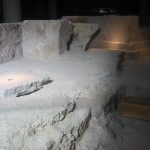The 1st ‘Llíria City Of Music’ International Orchestra Conducting Coompetition praised, a few weeks ago, the best young batons on the planet. The 3 finalists played an extraordinary role and, although it is already known that the winner was the Hungarian director Levente Törok, one of the most positively surprising roles was that of the Russian director Liubov Nosova, who garnered a commendable 2nd place.
This young and promising Russian conductor, pianist and organist began her studies at the age of 4, debuted at the age of 9 as a soloist with orchestra and at 18 she conducted her first symphonic concert.
She is the winner of several competitions as an organist, she has participated in numerous competitions as a pianist and conductor, as well as recital tours in Italy, France and Switzerland.
She currently resides in Berlin, where she is pursuing her doctorate, after obtaining the prestigious scholarship from the Dirigentenforum for Deutschen Musikrats. She has ever since been invited to conduct the Bochumer Symphoniker, Berliner Symphoniker, Brandenburgisches Staatsorchester Frankfurt, Brandenburger Symphoniker, Moravian Philharmonic Orchestra, Pazardjik Symphony Orchestra, Saint-Petersburg Conservatory Orchestra, Academy Symphony Orchestra in Sofia, among other formations. Most recently, she has conducted Puccini’s La Boheme in Saint Petersburg.















